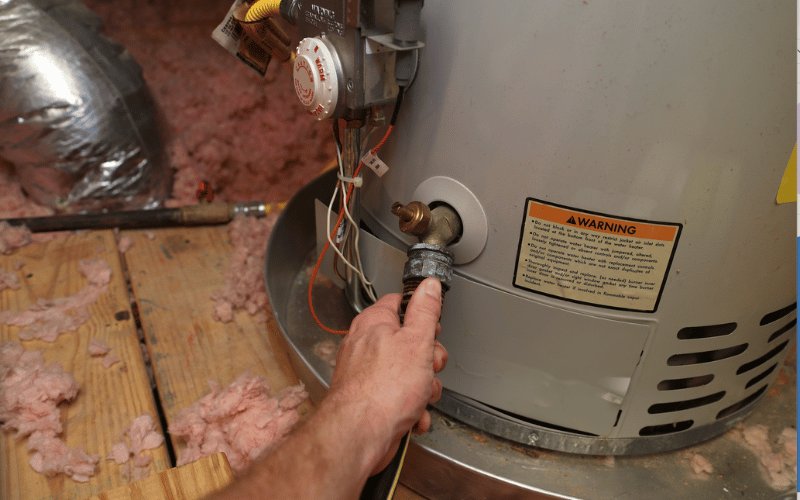Easy Ways to Maintain Your Home's Hot Water System Effectively
Easy Ways to Maintain Your Home's Hot Water System Effectively
Blog Article
Just about every person will have their personal perception involving How to Maintain a Hot Water Heater in a Few Simple Steps.

Warm water is crucial for daily convenience, whether it's for a refreshing shower or washing meals. To guarantee your warm water system runs successfully and lasts much longer, regular maintenance is essential. This post supplies sensible tips and understandings on just how to preserve your home's hot water system to avoid interruptions and expensive repair services.
Intro
Keeping your home's warm water system could appear overwhelming, yet with a few easy steps, you can ensure it operates smoothly for several years ahead. This overview covers whatever from comprehending your warm water system to DIY upkeep pointers and understanding when to employ expert help.
Importance of Keeping Your Warm Water System
Normal upkeep not only prolongs the life expectancy of your hot water system but also guarantees it runs effectively. Ignoring maintenance can result in decreased efficiency, greater power expenses, and even premature failure of the system.
Indicators Your Hot Water System Needs Upkeep
Recognizing when your hot water system needs focus can protect against major issues. Keep an eye out for indications such as inconsistent water temperature, weird sounds from the heating unit, or rusty water.
Understanding Your Hot Water System
Before diving right into upkeep tasks, it's helpful to recognize the fundamental components of your hot water system. Commonly, this includes the hot water heater itself, pipelines, anode rods, and temperature level controls.
Month-to-month Maintenance Tasks
Regular month-to-month checks can assist capture minor concerns before they rise.
Flushing the Hot Water Heater
Flushing your water heater gets rid of sediment accumulation, improving performance and prolonging its life.
Monitoring and Replacing Anode Rods
Anode rods stop corrosion inside the container. Checking and replacing them when broken is vital.
Evaluating and Adjusting Temperature Level Settings
Readjusting the temperature setups ensures ideal performance and security.
DIY Tips for Upkeep
You can perform a number of maintenance jobs yourself to maintain your warm water system in top problem.
Checking for Leakages
Frequently check pipes and links for leakages, as these can result in water damages and higher costs.
Testing Pressure Alleviation Valves
Testing the stress safety valve ensures it operates correctly and stops too much pressure accumulation.
Shielding Pipes
Protecting hot water pipelines lowers heat loss and can save power.
When to Call a Specialist
While DIY upkeep is beneficial, some problems call for professional competence.
Facility Concerns Requiring Expert Aid
Examples consist of major leaks, electric troubles, or if your water heater is constantly underperforming.
Regular Professional Maintenance Perks
Expert upkeep can consist of comprehensive assessments, tune-ups, and guaranteeing compliance with security requirements.
Final thought
Normal upkeep of your home's warm water system is important for efficiency, longevity, and expense financial savings. By adhering to these pointers and recognizing when to look for professional help, you can guarantee a reputable supply of warm water without unanticipated disturbances.
How to Maintain an Instant Hot Water Heater
Before tinkering with your hot water heater, make sure that it’s not powered on. You also have to turn off the main circuit breaker and shut off the main gas line to prevent accidents. Also turn off the water valves connected to your unit to prevent water from flowing into and out of the appliance. 2. When you’re done, you have to detach the purge valves’ caps. These look like the letter “T†and are situated on either side of the water valves. Doing so will release any pressure that has accumulated inside the valves while at the same time avoid hot water from shooting out and burning your skin. 3. When the purge valves’ caps are removed, you have to connect your hosing lines to the valves. Your unit should have come with three hoses but if it didn’t, you can purchase these things from any hardware or home repair shops. You can also get them from retail stores that sell water heating systems. Read the user’s manual and follow it to complete this task properly. When the hosing lines are connected, open the purge port’s valves. 4. You should never use harsh chemical cleaners or solutions when cleaning your unit. Make use of white vinegar instead. It should be undiluted and you’ll probably use about 2 gallons. 5. Now flush your water heater. This task should probably take about 40 minutes. We can’t give you specific directions for this because the procedure is carried out depending on the type, model and brand of your heater. With that being said, refer to the user’s manual. 6. When you’re done draining the unit, you have to turn off the purge port valves again. Remove the hosing lines that you earlier installed on each of the water valves. Put the valve caps (purge port) back in their respective places and be very careful so as not to damage the rubber discs that are found inside these caps. 7. Now that everything’s back in place, check your user’s manual again to find out how to reactivate your water heating system. 8. Once it is working, turn one of your hot water faucets on just to let air pass through the heater’s water supply pipes. Leave the tap on until water flows smoothly out of it. https://www.orrplumbing.com/blog/2014/september/how-to-maintain-an-instant-hot-water-heater/

Hopefully you enjoyed reading our article on What Kind of Maintenance Do Water Heaters Need?. Thanks a lot for taking the time to browse our short article. Please pause to share this content if you liked it. I thank you for your readership.
Go Deal Report this page